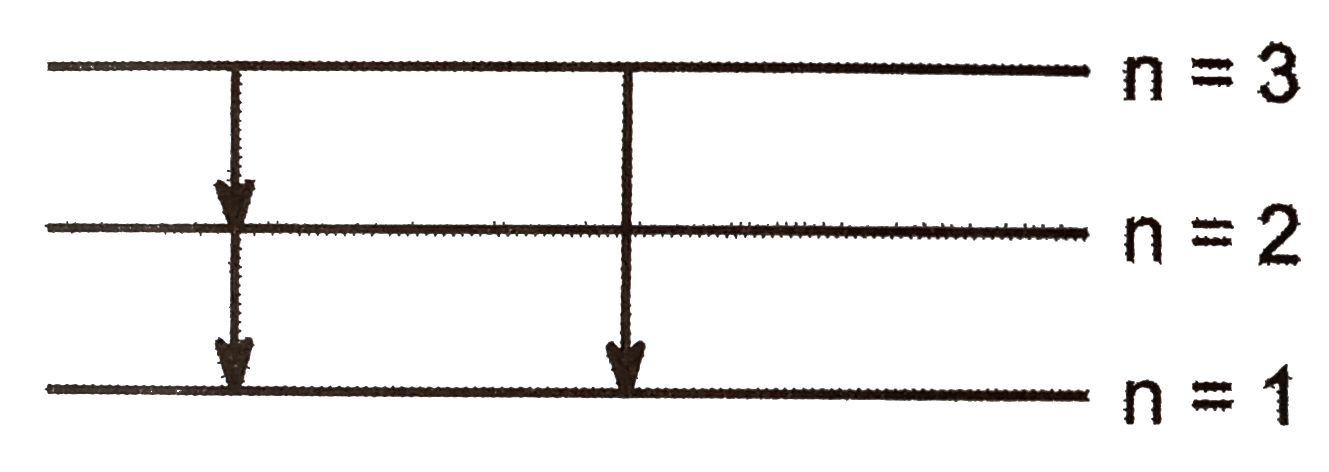Complete Solutions to Miscellaneous Numerical Examples of chapter ATOMIC STRUCTURE of Class 11 book with complete answers and questions
| Class 11 | CHEMISTRY |
| Chapter | ATOMIC STRUCTURE |
| OP TANDON | Miscellaneous Numerical Examples |
| Number Of Questions | 12 |
| Academic Year | 2023-24 |
The Schrodinger wave equation for hydrogen atom is `Psi_(2s) = (1)/(4sqrt(2pi)) ((1)/(a_(0)))^(3//2) (2 - (r)/(a_(0))) e^(-r//a_(0))` , where `a_(0)` is Bohr's radius . If the radial node in 2s be at `r_(0)` , then `r_(0)` would be equal to :
02:25View SolutionConsider the hydrogen atom to be a proton embedded in a cavity of radius `a_0` (Bohr radius) whose charge is neutralised by the addition of an electron to the cavity in a vacuum, infinitiely slowly .Estimate the average total energy of an electron in its ground state in a hydrogen atom as the work done in the above neutralisation process .Also if the magnitude of the average kinetic energy is half the magnitude of the average potential energy, find the average potential energy.
03:25View SolutionHydrogen atoms are excited from ground state. Its spectrum contains wavelength 486 nm. Find , what transition does the line corresponds to. Also find from this information what other wavelengths will be present in the spectrum?
03:08View SolutionIf uncertainties in the measurement of position and momentum of an electrona re equal, calculate uncertainty in the measurement of velocity.
02:15View SolutionHow much energy will be released when a sodium ion and a chloride ion, originally at infinite distance are brought together to a distance of 2.76Ã… (the shortest distance of approach in a sodium chloride crystal)? Assume that ions act as point charges, each with a magnitude of `1.6xx10^(-19)C`.
Permittivity constant of the medium is `9xx10^(9)Nm^(2)C^(-2)`.01:56View SolutionThe angular momentum of electron in a Bohr's orbit of H atom is `4.2178 xx 10^(-34) kg m^(2)s^(-1)`. Calculate the wavelength of the spectral line when the electrton falls from this level to the next lower level.
01:47View SolutionA negatively charged particle called Negatron was discovered. In the Millikan's oil-drop experiment, the charges of the oil-drops in five experimetns are reported as `3.2xx10^(-19)` coulomb, `4.8xx10^(-19)` coulomb, `6.4xx10^(-19)` coulomb `8xx10^(-19)` coulomb and `9.6xx10^(-19)` coulomb. Calculate the charge on the negatron.
02:40View SolutionWhen a certain metal was irradiated with light of frequency `3.2 xx 10^(16)s^(-1)` the photoelectrons emitted had twice the KE as did photoelectrons emitted when the same metal was irradiated with light of frequency`2.0 xx 10^(16)s^(-1)` . Calculate the thereshold frequency of the metal.
02:46View SolutionAn electron moves in an electric field with a kinetic energy of 2.5 eV. What is the associated de Broglie wavelength?
02:17View SolutionConsider the follwoing two elerctronic transition possibilites in a hydrogen atom as pictured below :

(1) The electron drops from third Bohr's orbit to second Bohr's obit followed with the next transition from second to first Bohr's orbit .
(2) The electron drops from third Bohr's orbit to first Bohr's orbit directly .
Show that :
(a) The sum of the enrgies for the transitions ` n=3` to ` n=2` and ` n=2` to ` n=1` is equal to the energy of transiton for ` n=3` to ` n=1` .
(b) Are wavelengths and frequencies of the emitted spectrum also additive in the same way as their energies are ?04:58View SolutionIf an electron is moving with velocity `500ms^(-1)`, which is accurate up to 0.005% then calculate uncertainty in its position. `[h=6.63xx10^(-34)J-s`, mass of electron `=9.1xx10^(-31)kg]`
02:26View SolutionApplyig bohr's model when H-atom comes from n=4 to n=2, calcualte its wavelength. In this process, write whether energy is released or aborbed? Also write the range of radiation `R_(H)=2.18xx10^(-18)J,h=6.63xx10^(-34)J-s`
02:00View Solution
Miscellaneous Numerical Examples questions and complete solutions for chapter ATOMIC STRUCTURE of G.R. BATHLA & SONS CHEMISTRY (HINGLISH) of Class 11
All Exercises from OP TANDON Class 11 CHEMISTRY ATOMIC STRUCTURE
- Assertion Reason
- Example
- Illustrations of Objective Question
- Integer Answer Type Questions
- Integer Type Question
- Linked Comprehension Type Question
- Matrix matching Type Question
- Miscellaneous Numerical Examples
- Objective Question Level-B
- Practice Problems
- Questions with single correct Answer
- Self Assement
- Set-2
- Solved Examples
- Some Solved Examples
